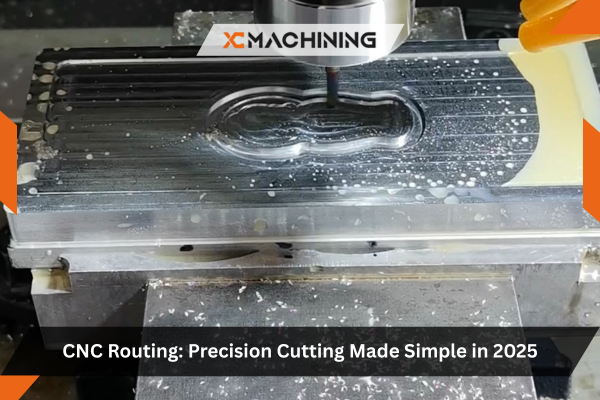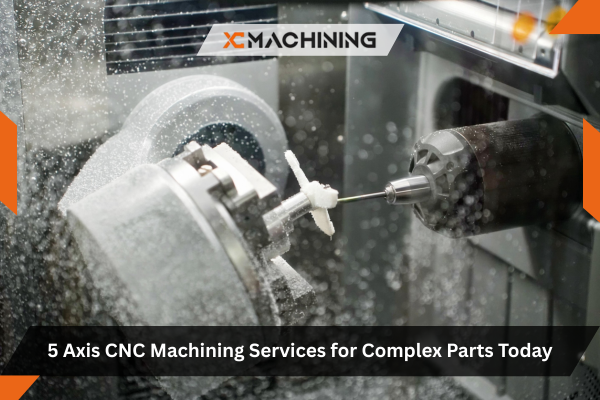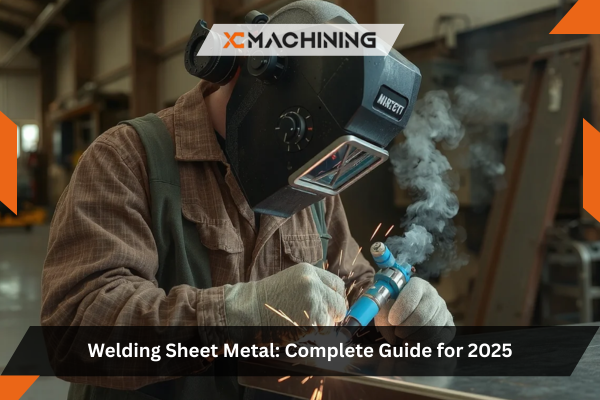Finding the right CNC machining parts supplier can make the difference between successful product launches and costly production disasters. Whether you’re developing prototypes for a startup, scaling production for an established business, or sourcing replacement components for critical equipment, the quality, reliability, and capability of your CNC machining supplier directly impacts your success. Poor supplier choices lead to missed deadlines, quality problems, cost overruns, and damaged customer relationships. Conversely, partnering with the right custom CNC machining services provider creates a competitive advantage through reliable delivery, consistent quality, and collaborative problem-solving. This comprehensive guide provides a practical framework for identifying, evaluating, and selecting reliable CNC machining parts suppliers who become genuine partners in your manufacturing success.
Table of Contents
Understanding Your CNC Machining Requirements
Before beginning your search for a CNC machining parts supplier, clearly define your specific needs. Vague requirements lead to mismatched partnerships and disappointing results, while well-defined specifications help identify suppliers whose capabilities align with your demands.
Critical Requirements to Define
Part specifications and complexity: Document dimensional tolerances, surface finish requirements, geometric complexity, and critical features. Simple parts with standard tolerances open more supplier options than complex geometries requiring tight tolerances.
Material requirements: Identify specific materials—aluminum alloys, stainless steels, titanium, engineering plastics, or exotic materials. Not all suppliers work with all materials, and material expertise significantly affects quality outcomes.
Volume and frequency: Determine whether you need prototype quantities (1-10 parts), low-volume production (10-500 parts), medium volumes (500-5,000 parts), or high-volume production (5,000+ parts). Different suppliers specialize in different volume ranges.
Quality standards and certifications: Define required certifications—ISO 9001 for quality management, AS9100 for aerospace, ISO 13485 for medical devices, ITAR registration for defense, or industry-specific qualifications.
Timeline expectations: Establish realistic lead time requirements for quotes, first articles, and production runs. Rush requirements narrow supplier options and increase costs.
Budget constraints: Understanding your cost targets helps filter suppliers appropriately, though remember that cheapest rarely equals best value in precision machining.
Where to Find CNC Machining Parts Suppliers
Multiple channels exist for discovering potential suppliers, each offering different advantages and considerations.
Online Directories and Marketplaces
Thomasnet.com: Comprehensive industrial supplier directory with detailed capability listings, allowing searches by location, capabilities, certifications, and specializations. Free for buyers with extensive supplier profiles and direct contact information.
Xometry and similar platforms: Digital manufacturing marketplaces offering instant quotes, automated supplier matching, and streamlined ordering. Convenient but typically focused on standard capabilities rather than specialized expertise.
Alibaba and global sourcing platforms: Access to international suppliers, particularly in Asia. Cost advantages often significant but require careful quality verification and communication management.
Google searches: Direct searches like “custom CNC machining services near me” or “aerospace CNC machining supplier” reveal local and specialized options. Examine multiple pages of results, not just the first few paid advertisements.
Industry Networks and Referrals
Professional associations: Organizations like the Precision Machined Products Association (PMPA) or Society of Manufacturing Engineers (SME) maintain member directories of qualified shops.
Trade shows and conferences: Events like IMTS (International Manufacturing Technology Show) or industry-specific exhibitions provide opportunities to meet suppliers, examine sample parts, and discuss capabilities face-to-face.
Peer referrals: Recommendations from colleagues, industry contacts, or business networks often lead to the most reliable suppliers. Personal experience provides valuable insights beyond marketing materials.
Existing supplier relationships: Your current suppliers may offer machining services or provide referrals to trusted partners in their network.
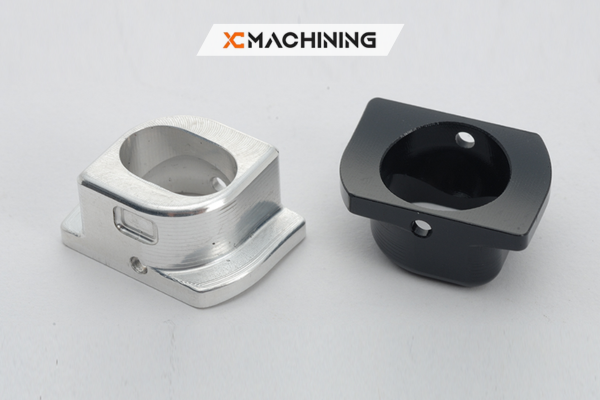
Initial Evaluation Criteria for CNC Machining Suppliers
Once you’ve identified potential suppliers, systematic evaluation helps narrow your list to the most promising candidates.
Technical Capabilities Assessment
Understanding a CNC machining parts supplier’s technical capabilities ensures they can actually produce your parts to specification.
CNC equipment portfolio: Inquire about specific machines 3-axis, 4-axis, or 5-axis CNC mills; CNC lathes with live tooling; Swiss-type screw machines for small diameter parts; multi-tasking machines combining milling and turning. Advanced equipment doesn’t guarantee quality, but appropriate equipment is prerequisite for success.
Tolerance capabilities: Ask about standard and tightest achievable tolerances. Realistic answers acknowledge that extreme tolerances increase cost and lead time. Beware of suppliers claiming they routinely hold unrealistic tolerances like ±0.0001″ on all features—this suggests inexperience or dishonesty.
Surface finish capabilities: Verify they can achieve required surface finishes, whether rough machined (125-250 Ra), standard machined (32-63 Ra), precision ground (8-16 Ra), or polished finishes.
Material expertise: Confirm experience with your specific materials. Machining aluminum differs dramatically from machining titanium, hardened tool steels, or engineering plastics. Material-specific expertise prevents costly learning curves on your project.
Secondary operations: Determine whether they provide heat treating, plating, anodizing, powder coating, assembly, or other finishing services in-house or through reliable partners. Single-source responsibility simplifies logistics and quality control.
Quality Management and Inspection Capabilities
Quality assurance separates reliable CNC machining parts suppliers from those who merely get lucky sometimes. Thorough quality systems prevent defects rather than just catching them.
Quality System Elements to Verify
Certifications and standards: ISO 9001:2015 represents baseline quality management for manufacturing. Industry-specific certifications like AS9100 (aerospace), ISO 13485 (medical devices), or IATF 16949 (automotive) demonstrate capability in regulated industries requiring rigorous quality control.
Inspection equipment: Professional custom CNC machining services maintain appropriate metrology equipment:
- Coordinate Measuring Machines (CMM) for complex 3D geometry verification
- Optical comparators for 2D profile inspection
- Micrometers, calipers, and pin gauges for basic dimensional checks
- Surface roughness testers for finish verification
- Thread gauges and functional gauges for specific features
First article inspection (FAI): Reliable suppliers conduct thorough first article inspections documenting all critical dimensions before proceeding with production quantities. Request sample FAI reports to evaluate their thoroughness.
Statistical process control (SPC): Advanced suppliers use SPC to monitor process stability and predict potential quality issues before defects occur, particularly valuable for higher-volume production.
Quality documentation: Ask about their documentation practices—inspection reports, material certifications, calibration records, and traceability systems. Comprehensive documentation indicates mature quality systems.
Evaluating Communication and Customer Service
Technical capability means little if communication breaks down. Effective communication prevents misunderstandings, resolves issues quickly, and enables collaborative problem-solving.
Communication Quality Indicators
Initial responsiveness: How quickly and thoroughly do they respond to initial inquiries? Slow or incomplete responses during the sales process rarely improve after you become a customer.
Technical knowledge: Do sales representatives understand technical requirements, or must every question be referred to engineers? Direct access to technical knowledge accelerates problem-solving.
Proactive engagement: Do they ask clarifying questions about your drawings, suggest design improvements for manufacturability, or identify potential issues before production begins? Proactive suppliers prevent problems rather than just reacting to them.
Language capabilities: For international suppliers, assess English proficiency (or your language requirements) carefully. Miscommunication about specifications creates costly mistakes.
Project management: Inquire about their project management approach dedicated project managers, regular status updates, online portals for order tracking, and escalation procedures for issues.
Design for manufacturability (DFM) feedback: Quality CNC machining suppliers review designs for manufacturability, suggesting modifications that reduce cost, improve quality, or accelerate production without compromising functionality.
Financial Considerations and Pricing Evaluation
While price shouldn’t be the sole decision factor, understanding pricing structures and ensuring financial viability matters for sustainable partnerships.
Pricing Structure Analysis
Quote completeness: Comprehensive quotes itemize machining operations, materials, secondary operations, finishing, inspection, packaging, and shipping. Vague quotes hide costs that emerge later.
Price competitiveness: Obtain quotes from multiple suppliers for comparison. Prices varying by 20-30% are normal given different equipment, capabilities, and overhead structures. Quotes dramatically lower than competitors warrant skepticism—they may reflect inexperience, poor quality, or financial desperation.
Volume pricing: Request pricing for different quantities to understand economies of scale. This reveals whether the supplier suits your long-term volume requirements.
Setup charges: Understand setup or programming charges, particularly for low quantities. High setup charges make sense for complex parts but can be disproportionate for simple components.
Payment terms: Standard industry terms are net 30 days, though some suppliers require deposits for new customers or unusual materials. Unreasonable payment demands may indicate financial instability.
Total cost of ownership: Consider beyond piece price—shipping costs, lead times affecting inventory carrying costs, quality issues creating replacement expenses, and communication difficulties increasing administrative burden.
Reference Checks and Due Diligence
Don’t rely solely on supplier claims and marketing materials. Independent verification provides realistic performance expectations.
Effective Reference Checking
Request customer references: Ask for 3-5 references from customers with similar part complexity and volume requirements. References from customers with vastly different needs provide limited insight.
Specific reference questions:
- Quality consistency across multiple orders
- On-time delivery performance
- Responsiveness to quality issues or problems
- Competitiveness of pricing over time
- Communication effectiveness
- Willingness to accommodate rush requests or changes
- Overall satisfaction and whether they’d recommend the supplier
Online reputation research: Search for reviews on Google, industry forums, and business directories. Patterns in feedback—positive or negative—provide valuable insights. Single negative reviews happen to every business, but consistent themes warrant attention.
Financial stability verification: For critical long-term relationships, consider Dun & Bradstreet reports or similar business credit checks confirming financial stability and business longevity.
Facility visits: For significant relationships, visiting the supplier’s facility provides invaluable firsthand perspective on cleanliness, organization, equipment condition, employee engagement, and overall professionalism. Virtual tours via video call offer alternative when travel isn’t feasible.
Testing the Relationship with Pilot Projects
Rather than immediately committing to large production runs with an unfamiliar CNC machining parts supplier, test the relationship with smaller initial projects.
Pilot Project Strategy
Start with prototypes or small quantities: Initial orders of 5-25 parts let you evaluate quality, communication, and delivery performance with limited financial risk.
Include representative complexity: Select parts that represent typical complexity and tolerance requirements rather than your easiest or most difficult components.
Evaluate thoroughly: Inspect first articles meticulously, measuring all critical dimensions and examining surface finish, edge breaks, and overall workmanship. This establishes quality expectations.
Assess responsiveness to feedback: If issues arise, how does the supplier respond? Defensive reactions and blame-shifting indicate problems, while professional accountability and corrective action demonstrate reliability.
Gradually increase commitment: If initial projects succeed, progressively increase order quantities and part complexity, building confidence before placing critical or high-value orders.
Red Flags and Warning Signs
Certain warning signs indicate suppliers likely to cause problems. Recognizing these red flags helps you avoid costly mistakes.
Critical warning signs:
- Reluctance to provide references or facility tours
- Lack of relevant certifications or quality documentation
- Dramatically lower pricing than competitors without clear explanation
- Poor communication—slow responses, language barriers, or technical ignorance
- Unwillingness to provide sample parts or first article inspection reports
- No clear quality assurance procedures or inspection capabilities
- Vague or incomplete quotes lacking detail
- Pressure tactics urging immediate commitment without due diligence
- Equipment obviously outdated or poorly maintained
- Disorganized, dirty, or chaotic facility conditions
- High employee turnover or inability to retain experienced machinists
- Financial instability indicators—frequently closed, unpaid bills, legal issues
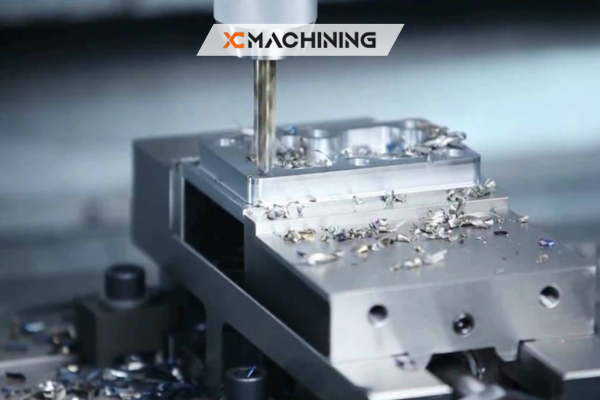
Building Long-Term Supplier Relationships
Finding a reliable CNC machining supplier isn’t just a transaction—it’s establishing a partnership that strengthens over time through mutual trust and collaboration.
Partnership Development Strategies
Clear communication: Provide complete, accurate drawings with well-defined specifications. Unclear requirements create problems regardless of supplier capability.
Reasonable expectations: Understand that extreme tolerances, exotic materials, or compressed timelines increase costs. Specifications should reflect actual functional requirements rather than arbitrary precision.
Fair treatment: Pay invoices promptly according to agreed terms. Suppliers prioritize customers who treat them professionally and pay reliably.
Feedback loop: Provide constructive feedback both positive recognition and specific concerns. This helps suppliers understand your expectations and improve performance.
Volume commitment: When possible, consolidate orders with fewer suppliers rather than spreading small quantities across many shops. Volume brings better pricing, priority treatment, and stronger relationships.
Long-term perspective: View supplier relationships as strategic assets requiring ongoing investment in communication, trust-building, and mutual success rather than purely transactional arrangements.
Collaborative problem-solving: When issues arise and they occasionally will approach them collaboratively seeking solutions rather than assigning blame. This builds resilience and loyalty.
Specialized Considerations for Different Industries
Certain industries impose unique requirements affecting supplier selection for CNC machining parts.
Aerospace: Requires AS9100 certification, NADCAP accreditation for special processes, full traceability of materials and processes, and extensive documentation. Prioritize suppliers with proven aerospace experience.
Medical devices: Demands ISO 13485 certification, cleanroom manufacturing capabilities for implantable devices, biocompatible material expertise, and validation documentation. FDA-regulated status requires rigorous quality systems.
Automotive: Benefits from IATF 16949 certification for tier suppliers, high-volume production capabilities, PPAP (Production Part Approval Process) documentation, and cost optimization focus.
Defense/Military: Requires ITAR registration for defense articles, security clearances for classified programs, strict material specifications, and government contracting experience.
Conclusion
Finding a reliable CNC machining parts supplier requires systematic evaluation, thorough due diligence, and strategic testing of potential partnerships. While the process demands time and effort upfront, identifying the right custom CNC machining services provider pays dividends through consistent quality, reliable delivery, competitive pricing, and collaborative problem-solving that strengthens your competitive position.
The most successful partnerships emerge when both parties understand requirements clearly, communicate effectively, and approach the relationship as strategic collaboration rather than transactional procurement. By following the framework outlined in this guide defining requirements precisely, evaluating capabilities systematically, verifying claims independently, testing relationships incrementally, and building partnerships deliberately you position yourself to identify CNC machining suppliers who become valuable long-term partners contributing to your business success.
Remember that the cheapest quote rarely provides the best value in precision machining. Instead, focus on total cost of ownership considering quality consistency, delivery reliability, communication effectiveness, and problem-solving capability. These factors ultimately determine whether a CNC machining parts supplier becomes an asset accelerating your success or a liability creating costly problems and delays.
FAQs
How many suppliers should I audit before choosing?
Most teams shortlist three, then run sample parts to pick the best fit.
Is overseas always cheaper for CNC parts?
Not always—factor shipping, tariffs, and communication delays before deciding.
Can one shop handle both prototypes and mass production?
Yes, if they own flexible fixturing and scale-ready scheduling software.
What documents speed up quoting?
STEP file, PDF drawing with tolerances, and estimated annual volume cut, guesswork.
How often should I visit the supplier in person?
At least once a year for strategic projects; virtual tours work between visits.


